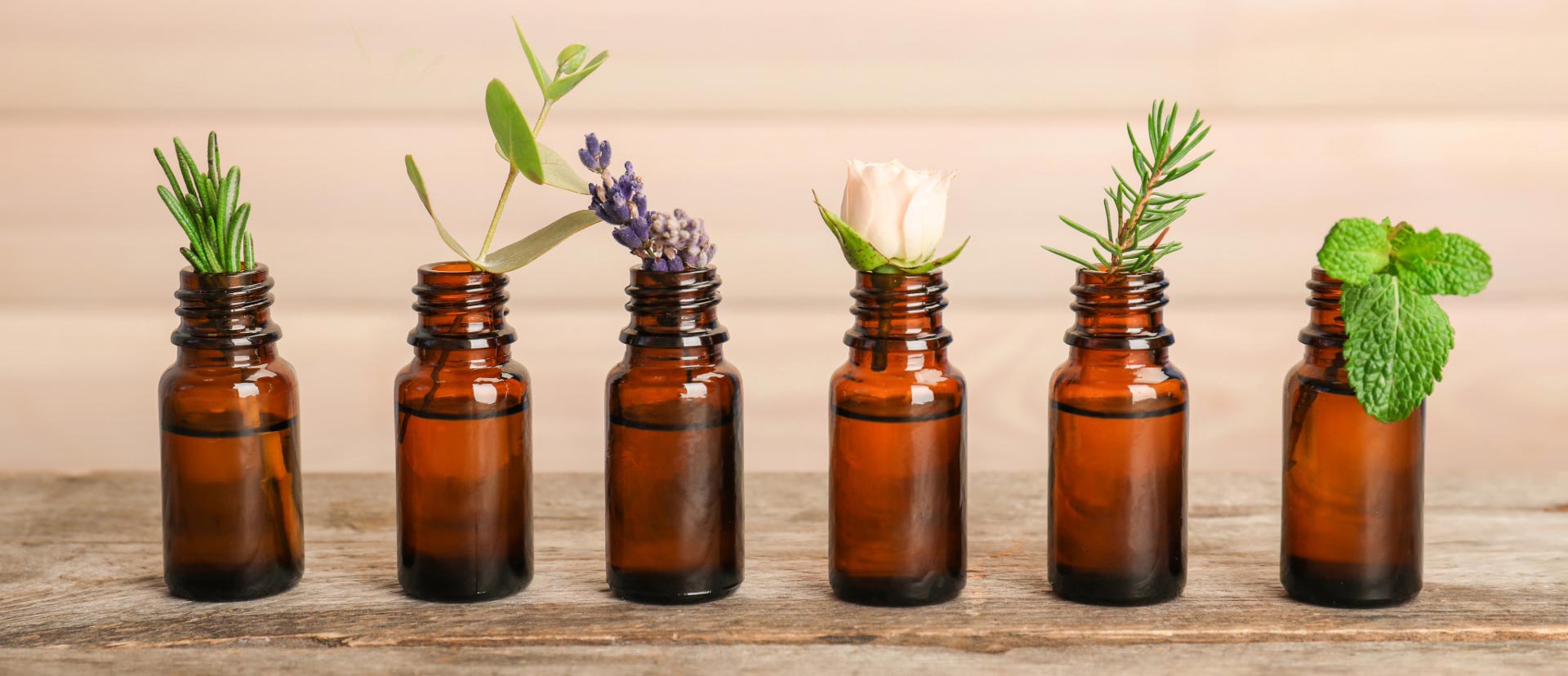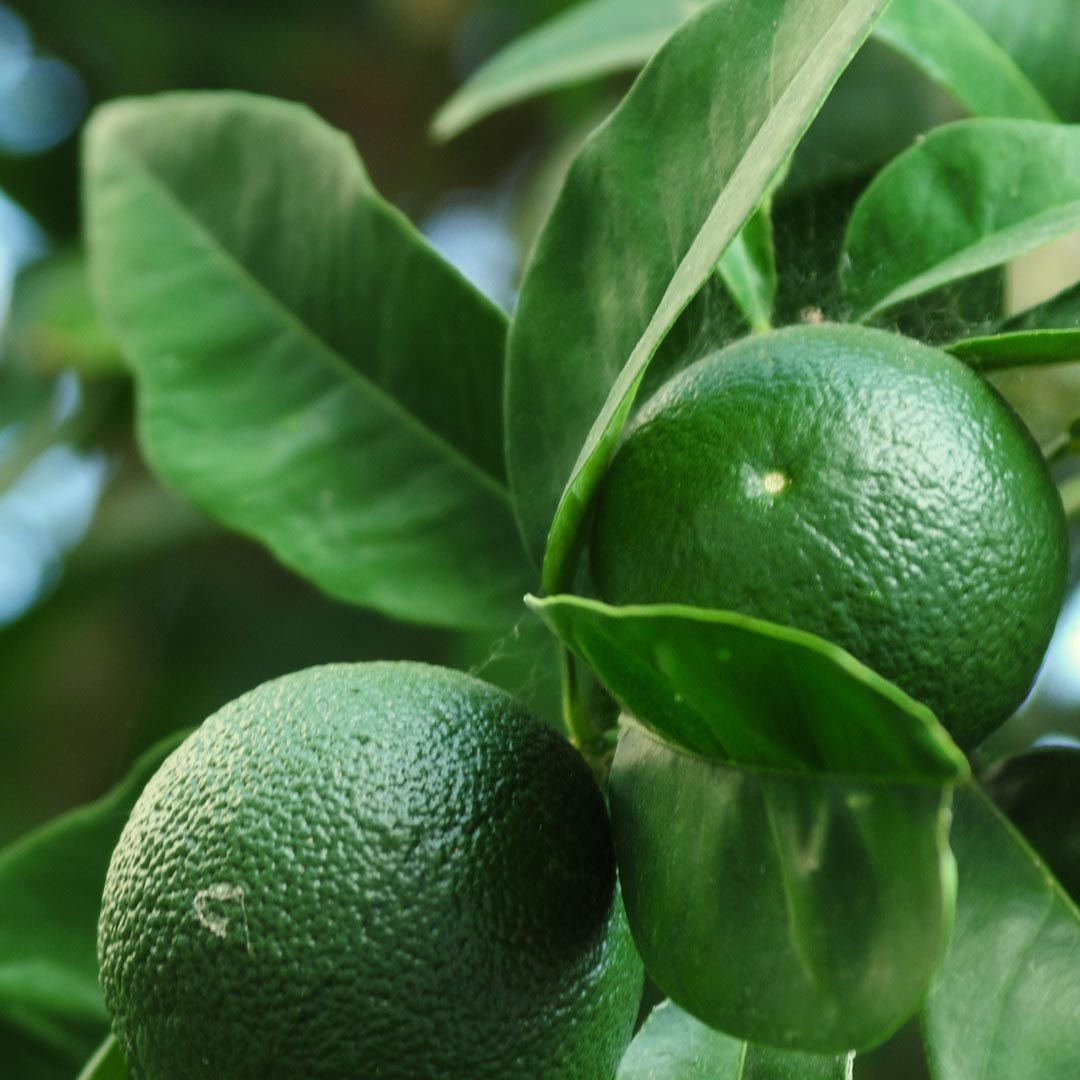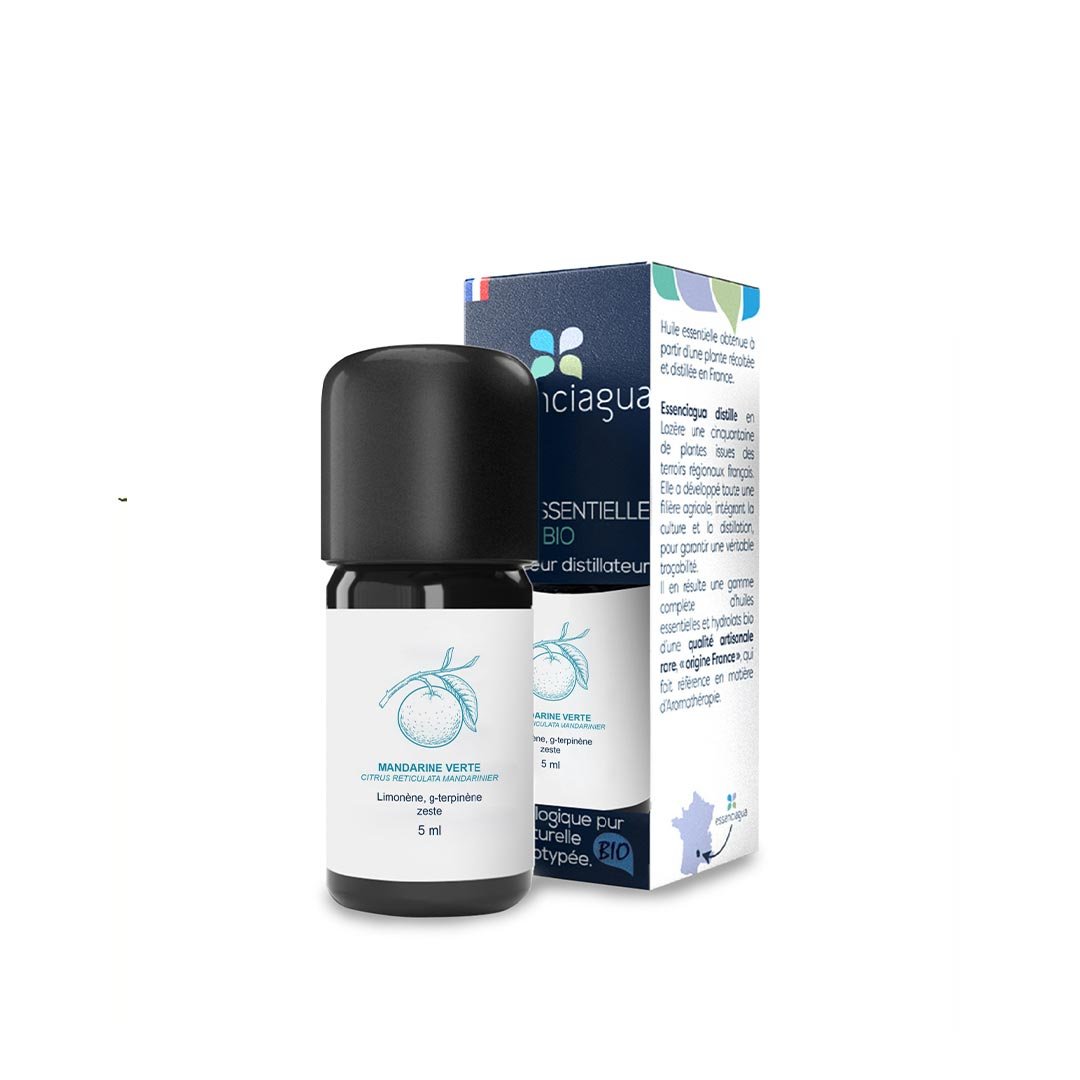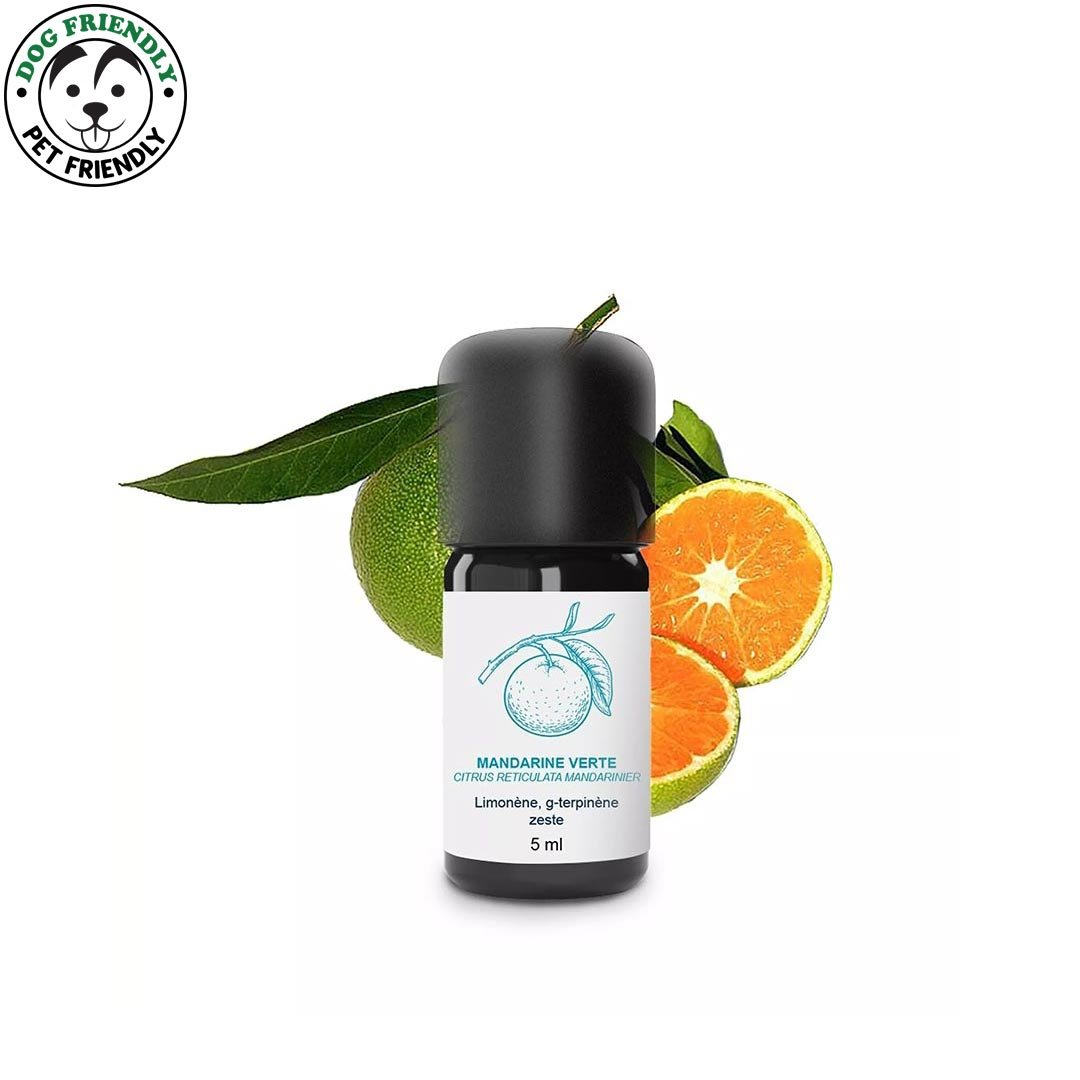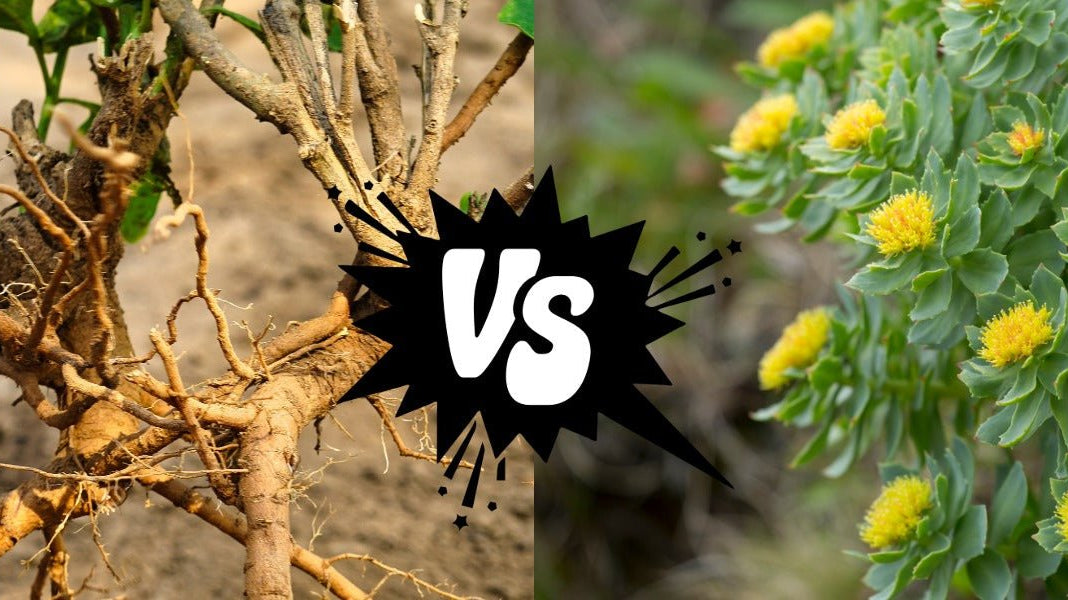Exclusive Guide to Green Mandarin Essential Oil

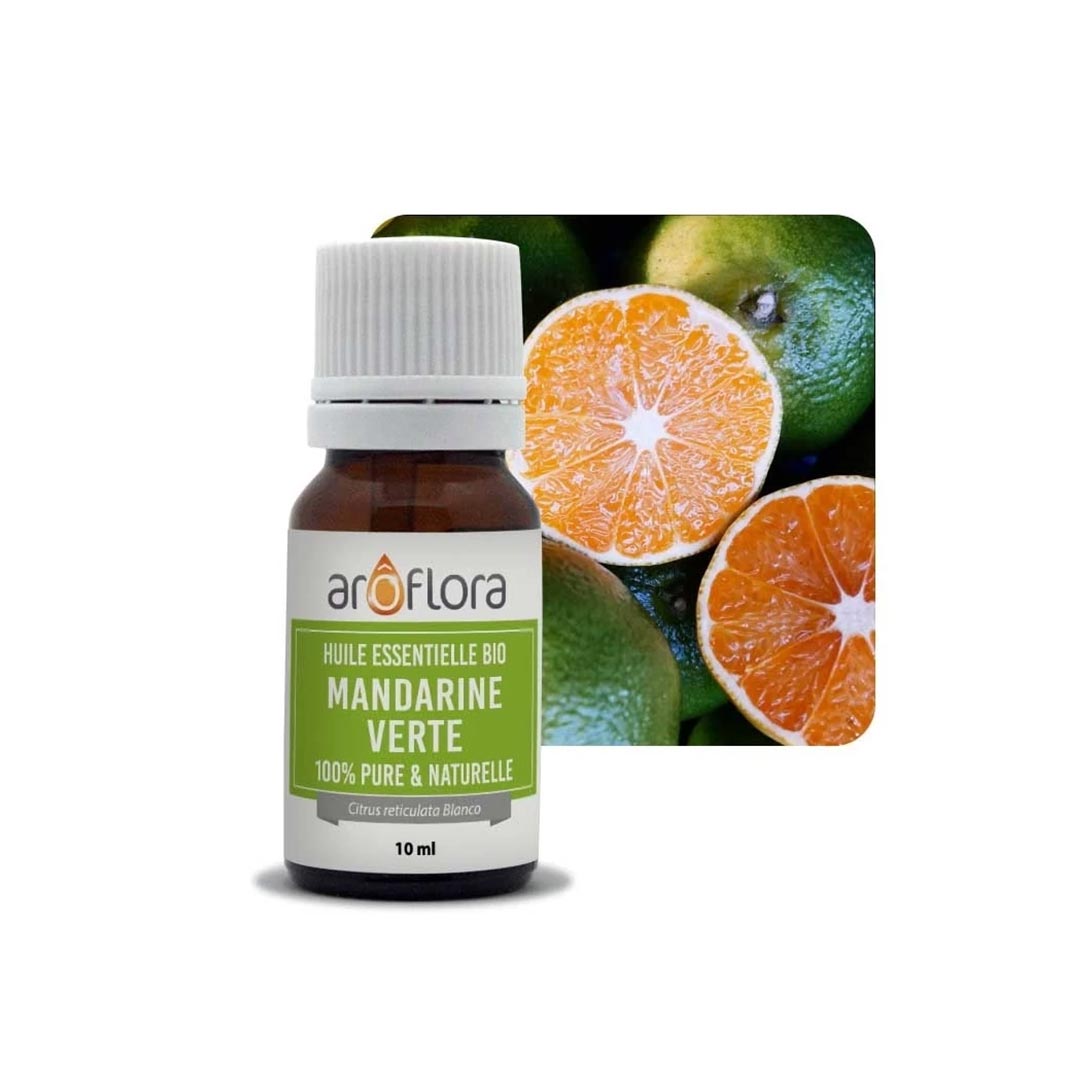
Citrus reticulata blanco
Origin: Brazil
Distilled part: Zest of the fruit
Extraction method: Cold expression of the zests from the young, unripe fruit.
Cultivation: Certified Organic farming
Botanically and Biochemically Defined Essential Oil (HEBBD), chemotyped (HECT)
Color: Green
Scent: a fresh, vibrant, and sweet citrus aroma with a playful, tangy twist
Note: Top note
Plant Family: Rutaceae




SUPER POWERS
Antiseptic
- prevents or combats bacterial infection
Antiviral
- kills or inhibits the growth of viruses
Antispasmodic
- prevents or relieves spasms
Calmative
- sedative calming effect
Carminative
- preventsor relieves flatulence; gas in the gastrointestinal tract
Cholagogue
- stimulates the flow of bile
Digestive
- improves the function of the stomach, increases appetite, and helps with digestion
Depurative
- cleanses and removes impurities and toxins from the blood; purifies the blood
Diuretic
- helps to increase the production of urine
Relaxant
- promotes relaxation or reduces tension
Sedative
- reduces mental excitement or irritability, and reduces physical activity
Tonic
- refreshes, revitalizes and invigorates body functions

USAGE TIPS

Persistent coughing
Mandarin oil helps to reduce spasms in the respiratory tract. Add 3 drops to a steam inhalation, and breathe deeply for 3 minutes. You can also mix 4 drops of mandarin oil with 1 teaspoon (5ml) of jojoba oil, and massage into the upper chest area.

Oily skin
With its astringent properties, mandarin oil helps to close pores and tighten the skin. Mix 3 drops with 2 teaspoons (10ml) of coconut oil, and massage into the face. Pay extra attention to the T-zone area.

Detox
Mix 4 drops of mandarin oil with 1 teaspoon (5ml) of jojoba oil, and massage into the soles of the feet. Mandarin helps to purify the blod, which helps the body to get rid of unwanted toxins from the body.

Detox Bath
Dilute 6 drops of mandarin oil in 1 tablespoon (15ml) carrier oil, and add to a warm Epsom salt bath.

Scars
Mix 3 drops with 1/2 teaspoons (2,5ml) of coconut oil, and gently massage over scar tissue twice per day.

Stretch marks
Mix 3 drops with 1 teaspoon (5ml) of coconut oil, and massage into the area of concern. Use mandarin oil to both prevent and diminish the appearance of stretch marks.

Vomiting
Mandarin eases spasms in the intestines which cause vomiting. Therefore mix 4 drops of mandarin oil with 1 teaspoon of carrier oil, and massage into the abdomen in a clockwise direction.

Stress and anxiety
Diffuse 5-10 drops of mandarin oil in your home or office, or place 2 drops on a tissue (or just inhale from the bottle) and inhale regularly throughout the day. Mandarin oil calms the nervous system, and help you to relax and overcome feelings of anxiety and stress.
Immune boost
Boost your immune system with mandarin oil, which strengthens the immune system and protects it from illness such as colds and flu. Inhale from the bottle or fill an inhaler. Use regularly.

Digestive Aid
Mandarin oil helps to promote healthy digestion and reduce bloating. Mix 3 drops with 1 teaspoon (5ml) of carrier oil and gently massage onto the abdomen in a clockwise direction to stimulate digestion.

Sleep Aid for Children
To help children wind down before bedtime, diffuse 2-3 drops of mandarin oil in their bedroom or add 1 drop to a cotton pad placed near their pillow. The soothing aroma creates a calming bedtime routine.
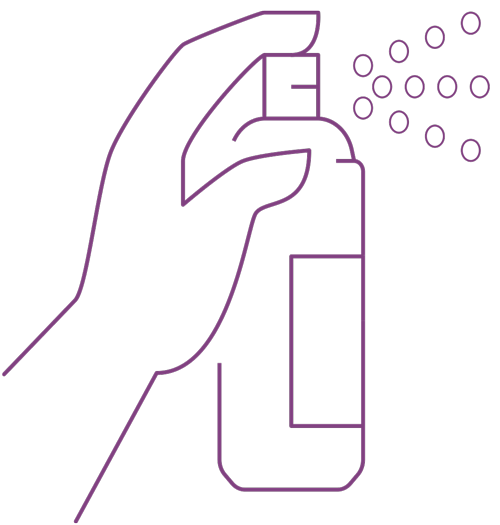
Room Freshener
To naturally freshen up any room, combine 5 drops of mandarin oil, 3 drops of lavender oil, and 2 drops of eucalyptus oil in a spray bottle filled with 100ml of water. Shake well and mist around the room.

Muscle Relaxation
To relieve tired or tense muscles, mix 5 drops of mandarin oil with 2 tablespoons (30ml) of your favorite carrier oil, and use it for a soothing massage on sore areas.

Mood-Lifting Diffuser Blend
Combine 3 drops of mandarin oil, 2 drops of bergamot, and 1 drop of ylang ylang in your diffuser. This blend uplifts the mood and combats feelings of sadness or irritability.

Hand and Nail Care
Add 2 drops of mandarin oil to 1 teaspoon of jojoba oil, and massage into your hands, cuticles, and nails to nourish and promote healthy-looking skin and strong nails.

Foot Odor
To combat foot odor, mix 4 drops of mandarin oil with 1 tablespoon (15ml) of coconut oil and massage into clean, dry feet. Its antimicrobial properties can help eliminate unpleasant smells.
Airway Support
When dealing with congestion, add 3 drops of mandarin oil to a bowl of hot water, cover your head with a towel, and inhale the steam for 5 minutes to open up the airways and ease breathing.
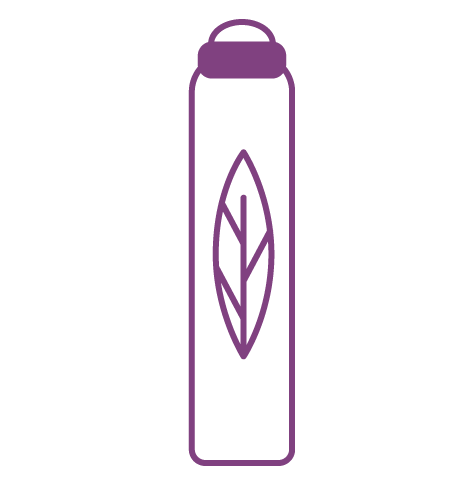
DIY Perfume Blend
Create a refreshing natural perfume by blending 4 drops of mandarin oil, 2 drops of vanilla oleoresin, and 1 drop of patchouli oil in a 10ml roller bottle filled with jojoba oil. Apply to pulse points for a subtle, uplifting scent.

Cradle Cap Relief
Dilute 1 drop of mandarin oil in 1 tablespoon (15ml) of sweet almond oil, and gently massage onto the scalp to help loosen cradle cap in babies. Leave for 10 minutes, then rinse with a gentle baby shampoo.

Natural Lip Balm
Add 1 drop of mandarin oil to 1 tablespoon (15ml) of shea butter or coconut oil, and use as a natural lip balm. Mandarin oil helps to soften and hydrate dry, chapped lips while giving a pleasant citrusy aroma.

Lymphatic Drainage
Mandarin essential oil can support lymphatic drainage and promote fluid movement in the body.
Mix 4 drops with 1 tablespoon (15ml) of a carrier oil, like jojoba or grapeseed oil, and use in gentle, upward massage strokes along the lymph nodes (e.g., neck, underarms, groin area).
This technique can help to reduce water retention and support overall detoxification.
Skin types
Green Mandarin essential oil is gentle and versatile, making it beneficial for a wide range of skin types. Here’s how it can support different skin concerns:
1. Oily and Acne-Prone Skin
- Why: Green Mandarin has mild astringent properties that help balance sebum production and tighten pores, which can reduce the appearance of oiliness and prevent clogged pores. Its antibacterial and anti-inflammatory effects make it effective for calming acne and preventing breakouts without irritating the skin.
- Best Use: Add a few drops to a carrier oil like jojoba and use it as a balancing facial oil or spot treatment.
2. Combination Skin
- Why: Because it helps balance oil production while still providing hydration, Green Mandarin is ideal for combination skin, which often has both oily and dry areas. The oil’s ability to tone and refresh the skin makes it suitable for addressing mixed skin concerns.
- Best Use: Use in a facial mist or a lightweight serum to help balance the skin.
3. Sensitive Skin
- Why: Green Mandarin is one of the most gentle citrus oils and is less likely to cause irritation or sensitivity. Its calming and soothing effects can help reduce redness and inflammation, making it suitable for reactive or easily irritated skin.
- Best Use: Dilute well and use in a gentle facial oil blend or calming mist. Always perform a patch test.
4. Dull and Tired Skin
- Why: The oil has revitalizing and brightening properties, which help to boost skin radiance and even out the complexion. The antioxidant effects of limonene help fight free radicals, which can make the skin appear dull.
- Best Use: Incorporate into a daily serum or moisturizer to promote a healthy glow.
5. Mature or Aging Skin
- Why: The antioxidant-rich nature of Green Mandarin helps to protect against environmental damage and reduce the appearance of fine lines and wrinkles. It also promotes collagen production and skin cell regeneration, giving the skin a more youthful appearance.
- Best Use: Blend into a nourishing anti-aging facial oil or night cream to support skin renewal.
Green Mandarin is hydrating, soothing, and non-irritating, making it an excellent choice for anyone looking for a gentle, refreshing oil that can address a variety of skin concerns. Its anti-inflammatory, antibacterial, and antioxidant properties make it suitable for oily, sensitive, combination, and mature skin types.
Is Green Mandarin Phototoxic?
Green Mandarin essential oil is not phototoxic. Unlike some other citrus oils, Green Mandarin does not contain high levels of furocoumarins, the compounds responsible for phototoxicity. This means it is safe to use on the skin without the risk of causing photosensitivity, even when exposed to sunlight.
You can comfortably use Green Mandarin in skincare products or body oils without worrying about sun exposure. However, it is always a good practice to dilute essential oils properly and perform a patch test to ensure there is no individual skin sensitivity.
Method of use & Amount to use
Aroma diffusers
Use 5-15 drops in your diffuser or the amount suggested with your diffuser.
Baths, Hot tubs, Jacuzzis
Bath: Diluted 3-8 drops
Start by running your bath as you normally would and keep the bathroom door closed to retain the aroma. Essential oils can be applied directly in their concentrated form or diluted.
For dilution, use a carrier oil, milk, milk powder, vegetable glycerin, seaweed powder, herbal powder, baking soda, salt, or Epsom salts to prevent skin sensitivity.
Add the essential oil to the bathwater, either neat or diluted, then stir the water with your hand to disperse the oil evenly before entering the tub. This method helps distribute the essential oil throughout the bath for a more enjoyable experience.
Hot tubs & Jacuzzis: up to 8 drops
Mix the essential oil into the water thoroughly using your hand. Since essential oils do not dissolve in water, they may leave residues in or around your pipes.
Compresses
3-10 drops in 120 ml of water
Learn more
Face masks, oils, and tonic
Face masks: 1 or 2 drops per 2 tbs. (15ml) of natural facemask.
Face oils: 12 drops in 30ml of carrier oil. For elderly and children use 6 drops per 30ml of carrier oil.
Use a dark-colored glass bottle, which helps protect your oils from light degradation. First, pour in the carrier oil. If you’re using a single essential oil or a premixed blend, add it directly to the carrier oil. If you’re crafting your own unique blend, mix your essential oils together first, then integrate the desired number of drops into the carrier oil. Remember, a little goes a long way, so only use a small amount for each application. Click here to read more about which carrier oil to choose.
Face tonic: 8-15 drops in 100ml of spring or distilled water or hydrosol.
Combine the oil and water before filtering through an unbleached paper coffee filter.
Our 100% organic and natural hydrosols can be used directly as a tonic. Shut your eyes and spray your face. Or spray a cotton pad and wipe your face with it.
Inhalation from bowl
3-5 drops per bowl of steaming hot water.
To use essential oils in steam inhalation, start by bringing a pot of water to a boil and then removing it from the heat. Add a few drops (typically 3-5 drops) of your chosen essential oil to the hot water.
Carefully lean over the pot, drape a towel over your head and the pot to trap the steam, and breathe deeply for several minutes to inhale the aromatic vapors, which can help relieve nasal congestion and other respiratory issues.
Lotions & Creams
12 drops to each 30 ml of natural, unfragranced lotion or cream.
You can make your own face cream with our neutral face cream as a base. For a 2% (adults) dilution use 40 drops in this 100 ml cream base.
For elderly and children use 20 drops (1%) in 100ml of cream.
Massage oil (for body)
12 drops to each 30 ml of carrier oil.
For elderly and children use 6 drops per 30ml of carrier oil.
Pillows
Place 1-3 drops of essential oil on the corner or underside of a pillow away from the eyes.
Room sprays
As room purifier: 10-20 drops per 475 ml of water.
As a general fragrance: 8-10 drops per 475 ml of water.
Scalp treatments
Add 6 drops in 15 ml of Jojoba oil or aloe vera gel. Shake well. Use 2-3 drops of your prepared blend for each application. Massage into your scalp. Alternatively, simply add the essential oil to a bottle of final rinse water after washing the hair.
Shampoos
5-10 drops in 100ml.
Essential oils can be added to any unscented shampoo that is composed of organic natural ingredients.
Showers
1-5 drops.
First, complete your usual washing routine. After that, apply a few drops of essential oil onto a washcloth or sponge and briskly rub it over your body while standing under the shower's running water. Inhale deeply through your nose to enjoy the aromatic steam, being careful to avoid applying the oil on your face and sensitive areas.
Sprays & Mists for Face and Body
For body: 10-20 drops to each 475 ml of water or hydrosol.
For face: 2-5 drops to each 240 ml of water or hydrosol.
Add the essential oil to warm water or hydrosol. Shake thoroughly, pour through an unbleached paper coffee filter, and place in a spray bottle. Cool before using.
Shake before each use.
Keep eyes closed when spraying the face.
Washes
15-32 drops in 240 ml of warm water.
A wash is a prepared mixture for washing infected areas such as cuts, grazes, and wounds.
Mix the essential oils and water together in a bottle and shake well. Keep it stored in the fridge for no longer than 14 days. Shake before each use.

Aromatherapy's top notes:
Aromas categorized as top notes are typically fresh and light with a sharp scent. They evaporate very quickly and possess antiseptic properties. These qualities make them uplifting for the mood and emotions, ideal for times when you need a quick energy boost. Top notes are also excellent for purification, such as when you're dealing with a cold. Consider each oil's unique properties when selecting which ones to use in a blend.
Examples of typical top notes include:
Citrus oils:
- Bergamot
- Grapefruit
- Orange
- Mandarin
- Neroli
- Petitgrain
Mint oils:
- Peppermint
- Spearmint
- Wild Mint
Fresh woody oils:
- Eucalyptus
- Tea Tree
- Pine
These top notes are perfect for enhancing your blends with their vibrant and cleansing effects.
Understand the Notes of Scents
In aromatherapy, the scent of an oil is often referred to as a "note." The secret behind a truly great fragrance is finding the perfect balance between the notes. Aromatherapy is about scents, and with practice, you will be able to recognize an oil's fragrance even if you might not know which plant the oil comes from. For example, you will be able to distinguish between citrus and floral scents or woody and minty fragrances. The scent is determined by the chemicals an oil contains. Because oils that smell alike often contain the same chemicals, they typically have similar properties.
Oils are categorized into so-called base, middle, and top notes. Knowing an oil's note is important when blending oils. A good blend—like most perfumes—normally contains a mix of all three notes, where the ratio between them varies depending on what the blend is used for. Additionally, an oil can contain more than one note—for example, ylang-ylang contains traces of all three notes and is often considered the perfect fragrance.
When creating a new fragrance, whether it's for a perfume or an aroma diffuser, you should use between 3-7 oils per blend. First, decide what type of blend you want to create, such as a refreshing one, and then choose notes with these characteristics to make up the main content of the blend. Dissolve the mixture in a carrier oil if you want to use it on the skin (12 drops in 30 ml of carrier oil).
| Blend | Top note | Middle note | Base note |
|---|---|---|---|
| Refreshing | 5 drops | 4 drops | 1 drop |
| Relaxing | 1 drop | 6 drops | 3 drops |
| Sensual | 1 drop | 4 drops | 5 drops |
| Balancing | 2 drops | 5 drops | 3 drops |
| Energizing | 8 drops | 1 drop | 1 drop |
RUTACEAE PLANT FAMILY
The Rutaceae family, commonly known as the citrus or rue family, is a large and diverse family of flowering plants. This family is of significant economic and botanical importance due to its members' aromatic properties, which are widely used in culinary, medicinal, and aromatic applications.
Key Characteristics
Aromatic Compounds:
One of the most defining features of the Rutaceae family is the presence of essential oils within the plants' glands, especially in the leaves and fruit peels. These oils are rich in volatile compounds that give many Rutaceae plants their distinctive, often citrusy aroma.
Leaves:
The leaves of Rutaceae plants are usually rich in essential oils and are often dotted with oil glands. They can be simple or compound, and in many species, they release a strong fragrance when crushed.
Flowers:
Rutaceae flowers are typically small to medium-sized and can be quite fragrant. They often have four or five petals, and the flowers are usually arranged in clusters. The blossoms can be white or colorful, depending on the species.
Fruits:
The fruits of the Rutaceae family are varied but include some of the most well-known citrus fruits like lemons, oranges, limes, and grapefruits. These fruits often have a thick, aromatic rind and are rich in vitamin C and other beneficial compounds.
Notable Genera and Species
Citrus:
This is perhaps the most famous genus within the Rutaceae family, encompassing species like lemon (Citrus limon), orange (Citrus sinensis), lime (Citrus aurantiifolia), and grapefruit (Citrus paradisi). These fruits are globally consumed and are prized for their flavor, fragrance, and nutritional value.
Ruta:
The genus Ruta includes the herb rue (Ruta graveolens), which has a long history of use in traditional medicine and as a culinary herb. However, rue is also known for its toxicity in large amounts and should be used with caution.
Murraya:
This genus includes the curry tree (Murraya koenigii), whose leaves are a staple in Indian cuisine. The leaves are used to add flavor to a variety of dishes.
Zanthoxylum:
Known as the genus of prickly ash or Sichuan pepper, Zanthoxylum includes species that produce the famous numbing spice used in Chinese cuisine.
Uses and Applications
Culinary: Many members of the Rutaceae family produce fruits that are vital in global cuisine. Citrus fruits are used in countless recipes, from drinks and desserts to savory dishes.
Medicinal: Several Rutaceae plants have been used in traditional medicine. Citrus fruits are rich in vitamin C and flavonoids, making them valuable for immune support and antioxidant properties. Other members, like the rue herb, have been used for various medicinal purposes, though with caution due to potential toxicity.
Aromatherapy: Essential oils derived from Rutaceae plants, particularly citrus oils like lemon, orange, and bergamot, are widely used in aromatherapy. They are known for their uplifting, refreshing, and cleansing properties.
Ornamental: Some Rutaceae species are also grown as ornamental plants due to their attractive foliage and fragrant flowers.
Ecological Importance
Rutaceae plants play a vital role in their ecosystems. They provide food and habitat for various insects, birds, and other wildlife. The flowers of many Rutaceae species attract pollinators, which are crucial for the reproduction of these plants.
Other Examples of Essential Oils
from the Rutaceae Plant Family
In addition to lemon essential oil, the Rutaceae family includes several other essential oils that are widely used in aromatherapy, perfumery, and natural health practices. Here are some notable examples:
1. Orange (Citrus sinensis)
Aroma: Sweet, fruity, and uplifting.
Uses: Orange essential oil is popular for its mood-enhancing and calming effects. It is often used in blends to reduce stress, promote relaxation, and add a cheerful note to the environment.
2. Bergamot (Citrus bergamia)
Aroma: Fresh, citrusy with a slight floral note.
Uses: Bergamot oil is known for its calming and balancing properties. It is commonly used to reduce anxiety, uplift mood, and is a key ingredient in Earl Grey tea for its distinctive flavor.
3. Grapefruit (Citrus paradisi)
Aroma: Bright, tangy, and slightly bitter.
Uses: Grapefruit oil is invigorating and is often used to promote feelings of energy and vitality. It is also popular in blends for detoxification and weight management.
4. Lime (Citrus aurantiifolia)
Aroma: Sharp, zesty, and refreshing.
Uses: Lime essential oil is known for its uplifting and revitalizing effects. It is frequently used in aromatherapy to boost mood and concentration.
5. Petitgrain (Citrus aurantium)
Aroma: Woody, floral, with a hint of citrus.
Uses: Extracted from the leaves and twigs of the bitter orange tree, petitgrain oil is often used for its calming and relaxing properties, making it ideal for reducing anxiety and promoting restful sleep.
6. Neroli (Citrus aurantium var. amara)
Aroma: Sweet, floral, and citrusy.
Uses: Neroli oil, derived from the blossoms of the bitter orange tree, is renowned for its soothing and emotionally balancing properties. It is also prized in skincare for its rejuvenating effects on the skin.
8. Bitter Orange (Citrus aurantium)
Aroma: Fresh, bitter, and slightly spicy.
Uses: Bitter orange oil is energizing and is commonly used to enhance mood and focus. It is also used in natural cleaning products due to its strong antimicrobial properties.
9. Yuzu (Citrus junos)
Aroma: Fresh, tart, and slightly sweet.
Uses: Yuzu oil is uplifting and refreshing, often used in aromatherapy to reduce stress and enhance relaxation. It is also popular in Japan for bathing rituals due to its invigorating scent.
The Rutaceae family is a remarkable group of plants that contribute significantly to human well-being and the environment. Whether through the zesty flavor of citrus fruits, the therapeutic properties of essential oils, or the ornamental beauty of their flowers, Rutaceae plants have a profound and far-reaching impact.
Green Mandarin Blends Well With These Essential Oils
Bay laurel, bergamot, black pepper, cardamom, chamomile roman, clary sage, clove bud, coriander seed, cypress, fellen, frankincense, geranium, ginger, grapefruit, juniper berry, lavender, lemon, lime, marjoram, orange, patchouli, petitgrain, pine, rosemary, sandalwood, thyme linalol, ylang ylang

Main Chemical Composition of Green Mandarin Essential Oil
Green Mandarin essential oil's therapeutic properties come from its unique composition. Here's a breakdown of the main chemical constituents and what each contributes:
Limonene (65-75%)
Contribution: Limonene is a powerful antioxidant and provides strong cleansing and detoxifying properties. It gives the oil its uplifting, fresh, and citrusy aroma. Limonene is also known for its ability to boost mood and reduce stress, making it a great choice for emotional well-being.
Why: It works as a natural solvent and is often used for its antimicrobial properties, making Green Mandarin essential oil useful for skincare and household cleaning.
γ-Terpinene (10-15%)
Contribution: γ-Terpinene has antioxidant and anti-inflammatory effects. It helps protect the skin from oxidative stress and supports a healthy immune response. It also plays a role in preserving the oil's freshness and enhancing its antimicrobial action.
Why: Its antioxidant activity helps to neutralize free radicals, making Green Mandarin beneficial in anti-aging skincare formulations.
Myrcene (1-5%)
Contribution: Myrcene is known for its calming, sedative, and muscle-relaxing properties. It contributes to the soothing and relaxing effects of Green Mandarin, making it great for promoting rest and easing muscle tension.
Why: This component enhances the oil's ability to calm both the body and mind, which is particularly helpful in aromatherapy for stress relief and sleep support.
α-Pinene (<1-2%)
Contribution: α-Pinene has a refreshing, pine-like aroma and provides respiratory support by helping to open the airways. It also has anti-inflammatory and immune-boosting properties.
Why: It makes the oil effective in blends for respiratory issues, like congestion or coughs, and enhances overall respiratory function.
β-Pinene (<1-1.5%)
Contribution: β-Pinene also contributes a fresh, woodsy aroma and has anti-inflammatory, antimicrobial, and bronchodilatory effects. It complements the respiratory benefits of α-Pinene and enhances the overall cleansing effect of the oil.
Why: It adds to the essential oil’s energizing and respiratory-supportive qualities, which is beneficial for fatigue or during the cold season.
Geraniol (<1%)
Contribution: Geraniol has a floral, slightly rosy scent and is known for its antimicrobial and skin-nourishing properties. It contributes to the gentle nature of the oil and enhances its effectiveness in skincare applications.
Why: It helps improve skin health by providing a protective and soothing action, making Green Mandarin suitable for sensitive or acne-prone skin.
What is a Chemotype in Essential Oils?
Chemotypes in essential oils refer to the different chemical compositions that can occur in the same plant species due to variations in their growing conditions, harvest times, or geographical locations. These variations lead to the production of essential oils with distinct chemical profiles, each possessing unique therapeutic properties. Understanding chemotypes is crucial for aromatherapy and medicinal applications, as the efficacy and safety of the oils can vary significantly based on their chemical makeup.
Here's a breakdown of what defines a chemotype and why it matters:
1. Genetic and Environmental Influences: A chemotype is often influenced by the plant's environment, such as altitude, climate, and soil composition, as well as genetic factors. These variables can affect which chemical compounds are predominant in the oil.
2. Chemical Composition: Each chemotype of an essential oil will have a dominant chemical compound or set of compounds that characterize it. For example, Rosemary essential oil can be found in several chemotypes, such as cineole, camphor, and verbenone, each named after its principal component, which dictates its therapeutic properties and uses.
3. Therapeutic Properties: The presence of different chemical compounds means that each chemotype can be more effective for different health concerns. For instance, the cineole chemotype of Rosemary is excellent for respiratory issues due to its expectorant properties, whereas the camphor chemotype is more suited for pain relief and circulatory problems.
4. Safety and Application: Some chemotypes may be safer or more appropriate for certain applications than others. For example, an essential oil chemotype high in ketones might be more neurotoxic and thus used with more caution, particularly around children or pregnant women.
Understanding chemotypes allows us to choose the most appropriate and effective essential oil for specific therapeutic outcomes, ensuring both safety and efficacy in their applications.
Green Mandarin is Safe to Diffuse around Dogs
Pet Safe
If you have dogs in the house, these are the recommendations on how to diffuse your essential oils in a safe way: only use 3-4 drops of a particular essential oil in a water based aroma diffuser (UltraSonic).
Use no more than 4-6 drops total if using more than one essential oil, or use the amount in the diffuser recipes.
Be sure your aroma diffuser is in an area where your pet cannot knock it over. Always diffuse in an open area with the door open so your dog can leave the room if desired.
If your dog is sensitive to an oil you are diffusing, stop diffusing and get your dog outside for some fresh air. Contact your veterinarian if you are concerned.
Storage
Essential oils are sensitive to UV: always keep them in their original bottles (amber glass with codigoutte).
We advise you to store them in a cool place without light after opening.
For your mixtures, cosmetic and culinary preparations, always use a new bottle to avoid interactions.
Disclaimer
This information is intended to educate and inform, and are not intended to diagnose, treat, cure, or prevent disease. It is always recommended to consult with a healthcare professional or veterinarian before starting any regime with Essential Oils.



